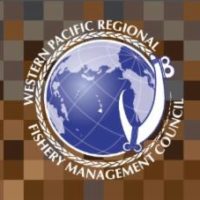
What was the total catch of American Samoa and Hawai‘i longline vessels last year?
Since the early 1990s, the Pacific Islands Region has relied on fishermen filing paper catch reports called “logbooks” to answer these important management questions.
This summer, all Hawai‘i and American Samoa longline vessels more than 50-feet long will switch from paper to electronic logbooks, ushering in a new era for monitoring these fisheries.
With the old way, longline captains fill out one logbook sheet for every day of fishing during their trip. Then they submit their full trip’s log sheets to the Pacific Islands Fisheries Science Center (PIFSC) when they return to port.
The data are verified and then manually entered into a database by PIFSC staff. There is a delay between when the paper logbook is filled out by the captain and when is becomes available to managers to compare the latest catch information with catch quotas. The data lag can easily be two to four weeks, which makes it challenging to predict when the fleet will reach the annual bigeye tuna catch limit.
Enter the tablets. Electronic logbooks, commonly referred to as electronic reporting (ER), automate and streamline many of these steps, allowing near-real-time catch reports. Captains use a tablet to enter their catch records daily while at sea, with the ability to enter their fishing location coordinates with the tap of a button instead of hand-writing the latitude and longitude every single day.
Once captains enter their daily report, another tap sends the data through the vessel’s existing satellite tracking and communication system to PIFSC’s secure server.
Development of the ER system for the Hawai‘i and American Samoa longline fisheries ramped up about 2014. After several years of development, PIFSC began rolling out the tablets in 2019 for Hawai‘i longline vessels to use on a voluntary basis.
Change can be scary for anyone, but especially for old-time fishermen who have used paper logbook for decades and may not be as technologically savvy.
In September 2020, the Council recommended that the ER system for the Hawai‘i and American Samoa longline vessels become mandatory this year. The rulemaking process will start soon and will include a public comment period. The ER rollout team will continue their outreach efforts to bring all vessels online before the mandatory requirement kicks in.
Source:Pacific Islands Fishery News




